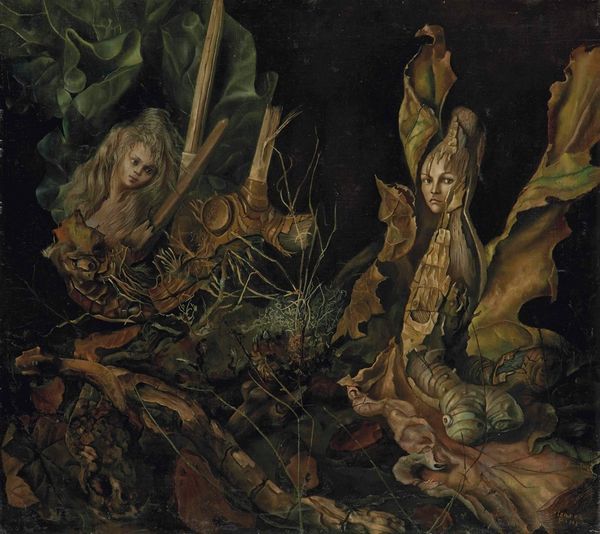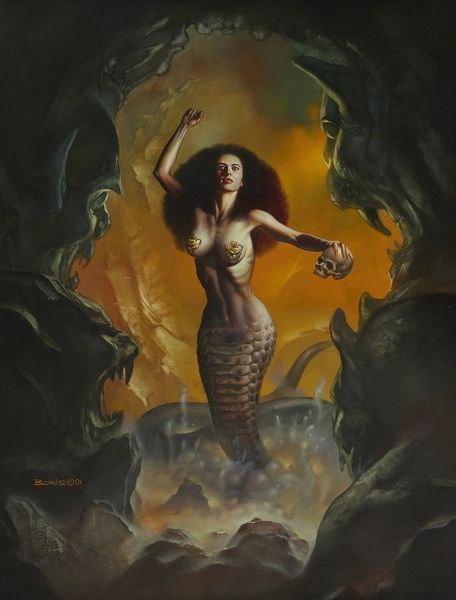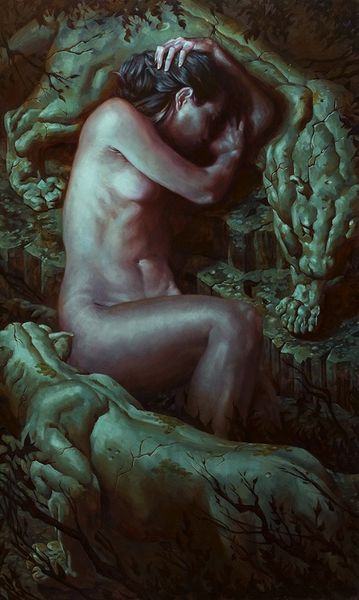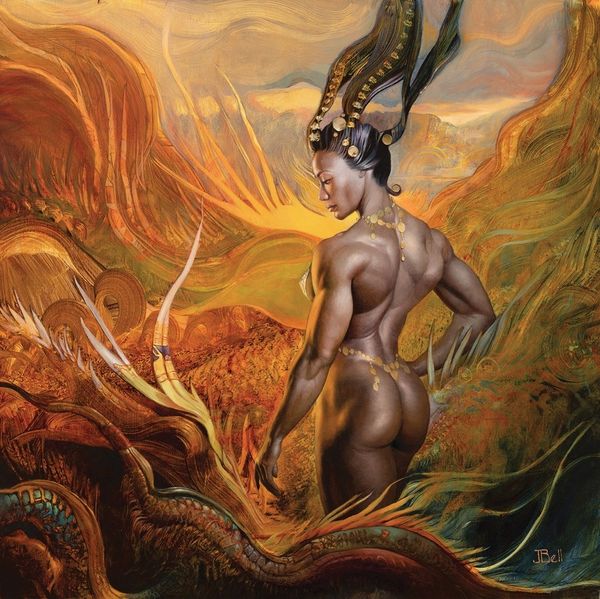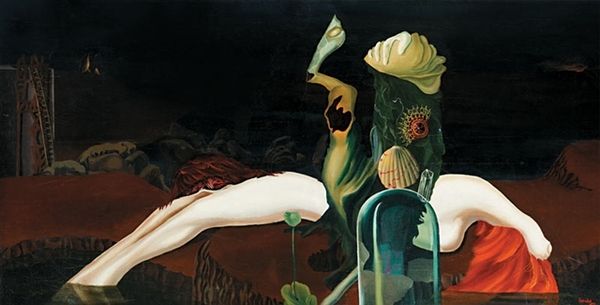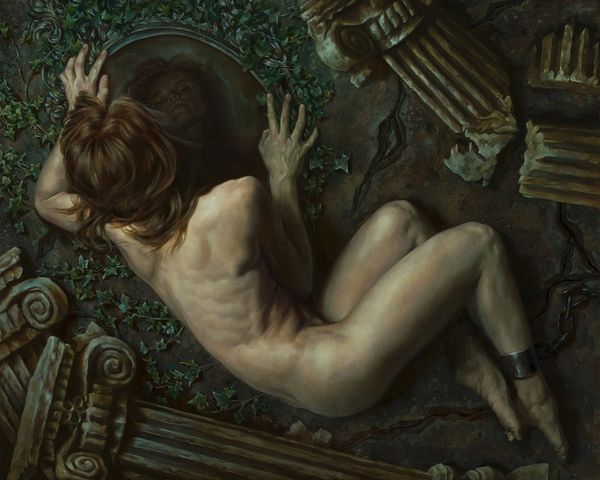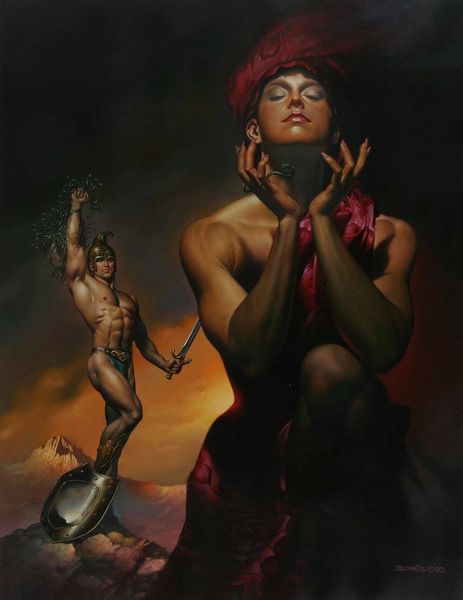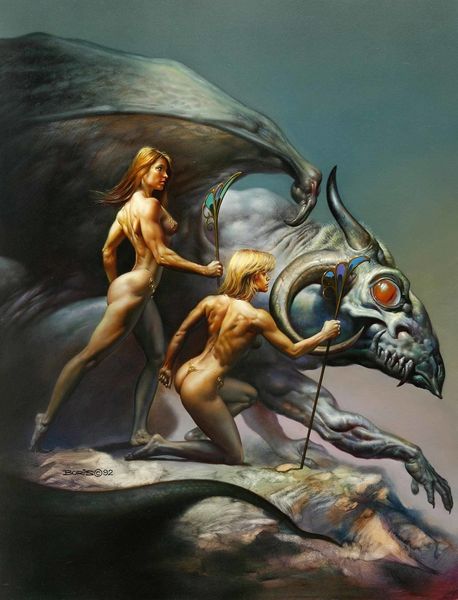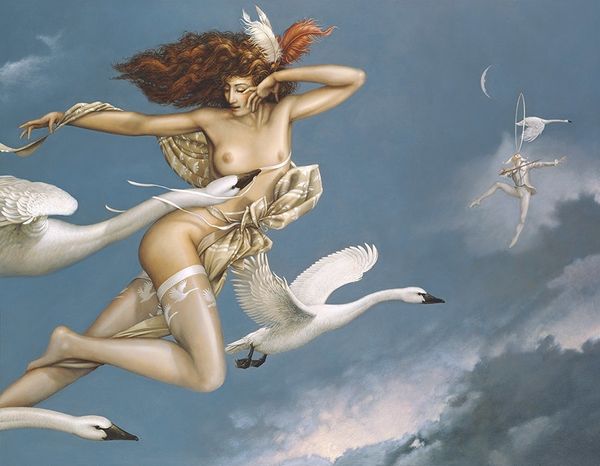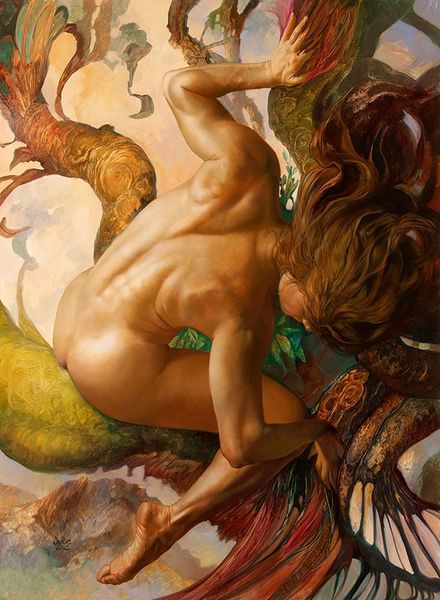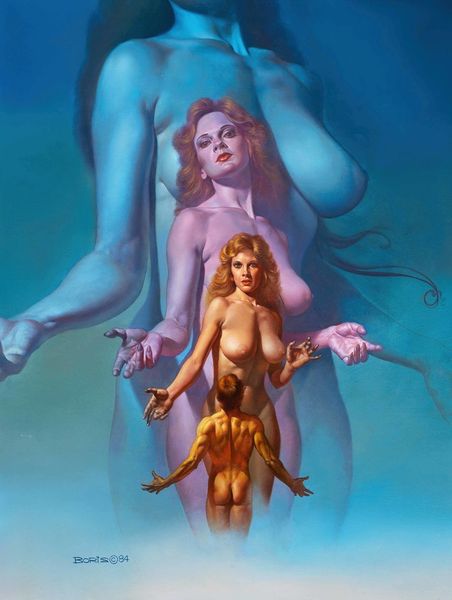
oil-paint
#
portrait
#
oil-paint
#
fantasy-art
#
oil painting
#
facial portrait
#
surrealist
#
nude
#
surrealism
#
portrait art
Copyright: Modern Artists: Artvee
Curator: What strikes me first about this piece is its unsettling serenity. There’s something so still, yet so strange about the scene. Editor: That’s a great way to put it. We’re looking at Léoonor Fini’s oil painting, L’Homme aux Chouettes, created around 1945. It's a truly peculiar portrait, isn't it? The way Fini challenges traditional representations of the male nude. Curator: Exactly. It is more than just the unconventionality. The owls, of course, command immediate attention. Owls have so many cultural resonances. The Romans, for instance, connected owls to both Minerva, the goddess of wisdom, and to death. It gives an immediate and uneasy tension. Editor: And they are rendered with such detail, almost scientifically observed, which intensifies the unsettling nature of the scene. Léoonor Fini, of course, had close ties to Surrealism in the post-war era. Her exploration of unconventional roles for women, as well as sexual symbolism in modern subjects, makes a unique impression. I notice there seems to be almost a female sphinx or harpy in the background near a gloomy shoreline or marsh. Curator: Yes, the androgynous figure dominating the scene adds to the layered complexity. Owls often symbolize wisdom, secrets, the nocturnal. He's both commanding and vulnerable. Consider too that ivy—a symbol of both clinging love and immortality—is entwined about his body. There is almost a symbolic armor here, and the way the bird’s wings mirror his posture... the blurring of human, animal, and divine is striking. Editor: And Fini certainly places her models in unsettling landscapes. There's the cave, the single egg, the murky shorelines that evoke psychological undercurrents in the male psyche, pushing against classical archetypes. There is a clear statement on what constituted "normal" and what challenges society through both presentation, and self discovery through self portraiture, which Fini often embraced. Curator: So, it really is about looking at the cultural framework itself and its many layers, right? It asks what and why and the history behind so many conventions in art. Editor: Right! A complex challenge in a deceptively still and strange portrait, which feels especially charged even decades after its creation. I keep finding new things in it! Curator: Absolutely. It invites ongoing questions and interpretation. That is what I value the most.
Comments
No comments
Be the first to comment and join the conversation on the ultimate creative platform.
